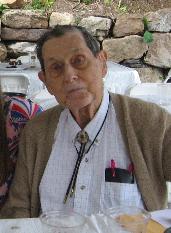This is mark Joseph “young” blog entry #59, on the subject of Verser Lives and Deaths.
This is about the creation of my book Verse Three, Chapter One: The First Multiverser Novel, now being posted to the web site in serialized form. This “behind the writings” look definitely contains spoilers, so you might want to read the referenced chapters before reading this look at them. That link will take you to the table of contents for the book; links below (the section headings) will take you to the specific individual chapters, and there are (or will soon be) links on those pages to bring you back hopefully to the same point here. There were also numerous similar previous mark Joseph “young” web log posts:
- #18: A Novel Comic Milestone (which provided this kind of insight into the first six chapters),
- #20: Becoming Novel (covering chapters seven through twelve),
- #22: Getting Into Characters (for chapters thirteen through eighteen),
- #25: Novel Changes (chapters 19 through 24),
- #27: Novel Continuation (chapters 25 through 30),
- #30: Novel Directions (chapters 31 through 36),
- #33: Novel Struggles (chapters 37 through 42),
- #35: Quiet on the Novel Front (chapters 43 through 48),
- #37: Character Diversity (chapters 49 through 56),
- #39: Character Futures (chapters 57 through 60),
- #43: Novel Worlds (chapters 61 through 66),
- #47: Character Routines (chapters 67 through 72),
- #50: Stories Progress (chapters 73 through 78),
- #53: Character Battles (chapters 79 through 84),
- #55: Stories Winding Down (chapters 85 through 90), and
- #57: Multiverse Variety (chapters 91 through 96).
This picks up from there. These chapters begin with Lauren exploring a new world and Joe leaving an old one.
There is some essential background to the book as a whole in that first post, which I will not repeat here.
Quick links to discussions in this page:
Chapter 97, Hastings 34
Chapter 98, Slade 32
Chapter 99, Kondor 33
Chapter 100, Hastings 35
Chapter 101, Slade 33
Chapter 102, Kondor 34
The “parakeet people”, as I mentioned, had been created for a different world, a world called The Valley for a demonstration version of the game; this was not at all like that world, but the people seemed like they would work here. They are technologically less advanced, closer to the culture of birds in their practices, and have no psionic abilities, but are otherwise the same. I wanted something that was alien but cuddly, something that the reader could love or could at least understand how Lauren could love them. Making them brightly colored flightless avians fit the bill, and I had already used such creatures in that other world so I’d given some thought to them.
Obviously birds are not sexless, but their genitalia are somewhat different from mammalian, sufficiently so that (as is true with felines, come to think of it) humans don’t see it. Since they were avian, I made them oviparous, which eliminated the navel and the mammary glands. Thus to Lauren they would not be distinguishable by gender on sight, at least initially.
The tapping speech centers trick is something that I picked up from Dungeons & Dragons™, that a number of spirit creatures do: they read the minds of the people in front of them in a way that allows them to speak and understand the target’s language while doing so. My character did it in play, I think when he contacted the Dar Koni in Nagaworld, but Lauren is teaching herself to do it here. It proves less than completely reliable at first, as she has trouble finding a word and then a moment later finds it easily. I describe it differently from the way the Dungeons & Dragons books do.
The aspect of being unable to say her name in their language is tricky. Most names in most languages have meanings, but at least in modern America we have largely abandoned words as names. That is, when a Greek said that his name was Theodorus, everyone knew that meant God’s gift; when an American says his name is Theodore, everyone just asks whether people call him Theo or Ted, and we don’t think about what the name means. Yet between human languages names translate—the Greek Petros is the English Peter, the Spanish Pedro, and the French Pierre, only partly because the name has a meaning, and only partly because the languages are related. But English was not related to the Parakeet language in any way, and whatever meaning “Lauren” has relates to objects in our world which probably did not exist in theirs. Thus although in the next book Lauren’s name would translate to a proto-English version when she used the same trick, in this case she could not translate her name into their language.
That also let me suggest that their mimicking abilities were as good as any earthly bird.
The notion that the word for “home” meant “nest” was quite logical. We use the word “home” to mean “house”, but also to mean some rather intangible concepts about people and places. The word that they used for their houses would similarly extend to cover the place where they lived more generally.
The fear of “something else that had nothing to do with her” was my first step toward the climactic events of the book. I was introducing the concept that these people had an enemy, and the enemy exercised some control over them. The something which the birds feared turned out to be the sparrow people; I had not at this point determined that.
I liked saying that the mayor started toward the town “without another peep”. It was an expression my parents used, and I’ve heard others say something about not wanting to hear another peep out of someone, usually children who are supposed to be going to sleep. The impression that these are child-like creatures was underscored by that, I think, but of course they were also bird-like, and we think of birds as peeping, and in fact use it of children mostly because we use it of birds.
I never actually used a Playstation Guncon, but I saw one a few times. I decided it was a good design for an inertial weapon, and it made sense for Slade to have played video games with it at some point. I think it was a relatively short-lived gadget, but it was sufficiently connected to his time that I could make the reference. When I first saw the Blake’s 7 blasters, I thought they were a neat design, an escape from the traditional shape of guns. One could say the same, I suppose, about the hand-held Star Trek phasers. But when I learned the concept of the fast draw (not just that it existed, but how it worked) I realized that pistol grips were designed so that when held normally the gun barrel would point toward the target. Thus I needed something more like a gun than not. Yet I still wanted something different; and the idea that Slade was a video game player invited the idea of using something that functioned like a gun in the modern video game world. The Guncon was available, something like a gun but not, with a similar grip system, so it became the design of choice. It also meant Slade had used something enough like it to know what he was doing with it.
The MK-12 does pretty much the same thing as Kondor’s kinetic blaster, but I gave it different power parameters. Kondor’s can be adjusted to three levels of impact, increasing in damage and power consumption, which means fewer shots at higher levels of impact. Slade’s has only the one power level, but it gets as many shots from one battery as Kondor’s gets from his lowest setting. On the other hand, Slade’s is the larger gun to carry. There is little functional difference between the two guns, but I wanted there to be operational differences because they came from different worlds.
It was time to give Slade skills based on his stay in the space world. I wanted him to have the blaster, and to improve his thief skills by extending them to these kinds of locks, so I started that process. Lock picking of course has to keep pace with the technology. Slade has leapt across centuries of technological improvements, so he needs to get up to speed on the locks—but Tom Titus can teach him.
The anti-supernaturalist Joe Kondor is looking for a naturalist explanation for creatures that appear to be made almost entirely of light with bits of matter floating within them. Magnetism and gravity are the first ideas that come to him. Again he found a naturalist explanation for a supernatural phenomenon. In this case, even though it’s not accurate, it gave him a functional way to respond to the monsters.
The fact that the vorgo unmakes these creatures is a complete surprise to him, but he does not have time to think about it at the moment. That ultimately comes back to him in another book.
I didn’t have “magic weapons”, so I needed to find a way to make specters difficult to kill but not invulnerable. The notion of knocking out bits of skeletal debris from within the field that comprised their form gave me that option, since if you aimed solely for the form you probably would miss the bits and pass your attack harmlessly through, but if you focused on hitting the fragments rather than the creature, it was a tougher shot but a potentially effective one.
The big limitation on guns (slug throwers) is the ammunition. I’m generally pretty lenient on being able to find the “right” bullets in any world that has bullets (with a few exceptions, such as Dark Honor Empire where only one size bullet exists), but when you’re in primitive worlds running out of bullets is a big deal. Besides, he had already used quite a few in The Mary Piper (beta), and had not had a chance to replace them.
I was rationing his bullets, and yet exhausting them. It was important that he run out of ammo, but not too soon.
I wanted Lauren to learn the language, so I had to explain why the link was not sufficient; it’s a reasonable explanation anyway. I also wanted to use the time Lauren was here alone to give some feeling to the world in which the three would adventure.
The sparrow people came into existence at this moment. I knew that someone would be kidnapped by someone, but only now knew who the kidnappers would be.
The “sparrow” people are more like crows, I expect, but since parakeets are so small I didn’t want a larger bird and I didn’t want the name to prejudice the reader overly much. These are the villains, but they aren’t particularly villainous or threatening at this point. They were the “others” from the previous chapter when there was concern about the reaction of some “others”, and indeed they don’t like the fact that she is there. For one thing, they’re the dominators here, and that the oppressed people have a monster living among them is not going to be seen with approval.
Both the hint that she could not always get the language link and the comment about the pyrogenesis being less reliable here than in the vampire world are pointing to the fact that the psionic bias is lower here.
The thing about birds eating berries that are poisonous to people is true, part of basic survival training. It happens because the berries have a seed in a thin shell, and the bird’s digestive tract is less acidic and so does not dissolve that shell. The seed passes and finds soil elsewhere, thus spreading the plant to new locations. In other animals, though, the shell dissolves releasing an internal poison that sickens the eater, discouraging such creatures from taking the berries in the future.
There is a survival field test for edible plants, but there are kinds of plants for which it does not work (mushrooms notably) so it’s probably better not to use it in an alien world. In any case, Lauren doesn’t know the test.
I decided on the double-length seasons as a way of making things move slowly here, and creating more time for everything to happen without disrupting it with a winter. I wanted Lauren to be here a long time but not a lot of seasons; she arrived in the early to mid spring, and I wanted the half year to the late autumn to be a long time in which a lot happened. So I decided that the year was about twice as long on this planet as on earth. That’s simple enough to do, I think—a larger, hotter central star and an orbit farther from it getting about the same radiant energy but going through seasons and years more slowly.
I also wanted her to get a bit complacent, and then realize that she shouldn’t be.
The mini-adventures referenced at the beginning of this chapter were all concepts from Blake’s 7 episodes. That was, in fact, one of the problems I had with this scenario–so much had been done so well by the series this was emulating that creating new stories was a challenge. The idea of the Federation trying to trap Destiny came from a Blake’s 7 episode, but didn’t do anything that that episode did. So, too, the notion of transporting a rebel organizer to another planet, but in the Blake’s 7 version the Federation had replaced the organizer with an incredibly sophisticated robotic duplicate. I stuck to the simple form, partly because I didn’t want to steal so cleverly original a script idea, and partly because I didn’t see any way Slade could have been involved in such a story.
These adventures also gave Slade time to practice, which made his skill the more credible, particularly with the blaster he had only recently obtained. It should have taken longer to get as good as he got, but I didn’t want to drag the story too much.
One of the better pieces of advice I picked up decades ago was not to name characters specifically so you can make jokes about their names (one of the reasons I find the Meet the Parents films so annoying). I broke that rule with Rhodes Correctional Facility, not merely because Rhodes’ End had a clever ring to it, but also because I figured whatever such a prison was called someone would have come up with an ironic nickname for it at some point. This one worked.
The Rhodes prison break was, as far as I recall, my own idea from the ground up. I was not sure at this point how it was going to go, but I did think that Slade would verse out in the process. When I mentioned the security systems, I already had in mind the possibility that the air would be evacuated killing everyone including the Destiny crew. I didn’t like that idea, because I prefer an upbeat game and an upbeat story, and whatever happened to Slade I wanted the Destiny crew to survive at least, preferably succeed.
The shielding was a reasonable reason why they couldn’t materialize in the commander’s office; the communications systems were a reasonable explanation for why the entire thing wasn’t shielded; and it made sense that the central control area could not be shielded for that reason. But I was making it up as I went along, trying to figure out what I would do in that situation and why it wouldn’t work, and then what I would do instead. I also wanted to split the group up, because it made sense to have them work together in different places to make the plan work rather than go all in a unit to one place.
Tom’s pride, that Bob Barnes is “almost as good as me”, seemed an appropriate reflection of his character. He would not admit that someone was better than he was at any thief skills.
I also decided it was a trap at the moment they got there. I needed something to make it more interesting. What I had not decided was exactly how the trap was supposed to work; but it would mean that there would be no guards in the prison levels, as the obvious plan would be to evacuate the air once the Destiny crew was aboard.
I thought it was clever that they recognized the trap precisely because they did not see the fighter escort for the prisoner transport. It’s something like a prisoner transport convoy that does not have a police escort—the fact that there is no escort suggests that there are no prisoners, or the transport is bait.
I needed an excuse for Joe to keep the pistol bullets, because he was going to need his guns for the last world and wasn’t going anywhere before that where he could resupply. This was a fight scene, plain and simple. I used the mace because I wanted to keep the bullets in the pistol (I’d already planned to provide bullets for the rifle through Lauren’s spare). Kondor needed to succeed clearly and die in the process, and this seemed to work.
In high school I attended a summer music camp, and at the end of the week we did a concert at a church in Flemington that had a real pipe organ. Its choir loft was a maze, and our handlers had to arrange us and direct us so that the procession could split into the choir seats that surrounded the central organ and sat within the pipes. It happened one year that I was second in line, the guy in front of me meandering around the warren and landing cuddled up next to the organ. When we were later recessing, we had to wait while everyone else moved out of our way, and I jotted on a piece of music, “I guess the worst thing about being first in is being last out.” He wrote back, “At least I can say that I led the choir.” That’s where the line about being last out originates.
In play this is a tough world, because you really want the player to defeat the undead, but once he has done this there isn’t much for him to do thereafter, and less that is likely to get him killed. I try to push the main fight to a place where the player knows that the humans have won but he’s not going to make it out alive. It was easy to do in the novel, of course. As C. S. Lewis once observed, in Hamlet Ophelia did not drown because the branch broke or because Hamlet did not arrive in time, but because Shakespeare drowned her. On the other hand, I do assume that in some way the undead recognize the verser as not of this world, and target him specifically.
Interest in these “behind the writings” continues, so I’m still thinking they’re worth producing. Feedback is always welcome, of course. Your Patreon support is also needed to maintain this.
[contact-form subject='[mark Joseph %26quot;young%26quot;’][contact-field label=’Name’ type=’name’ required=’1’/][contact-field label=’Email’ type=’email’ required=’1’/][contact-field label=’Website’ type=’url’/][contact-field label=’Comment: Note that this form will contact the author by e-mail; to post comments to the article, see below.’ type=’textarea’ required=’1’/][/contact-form]








